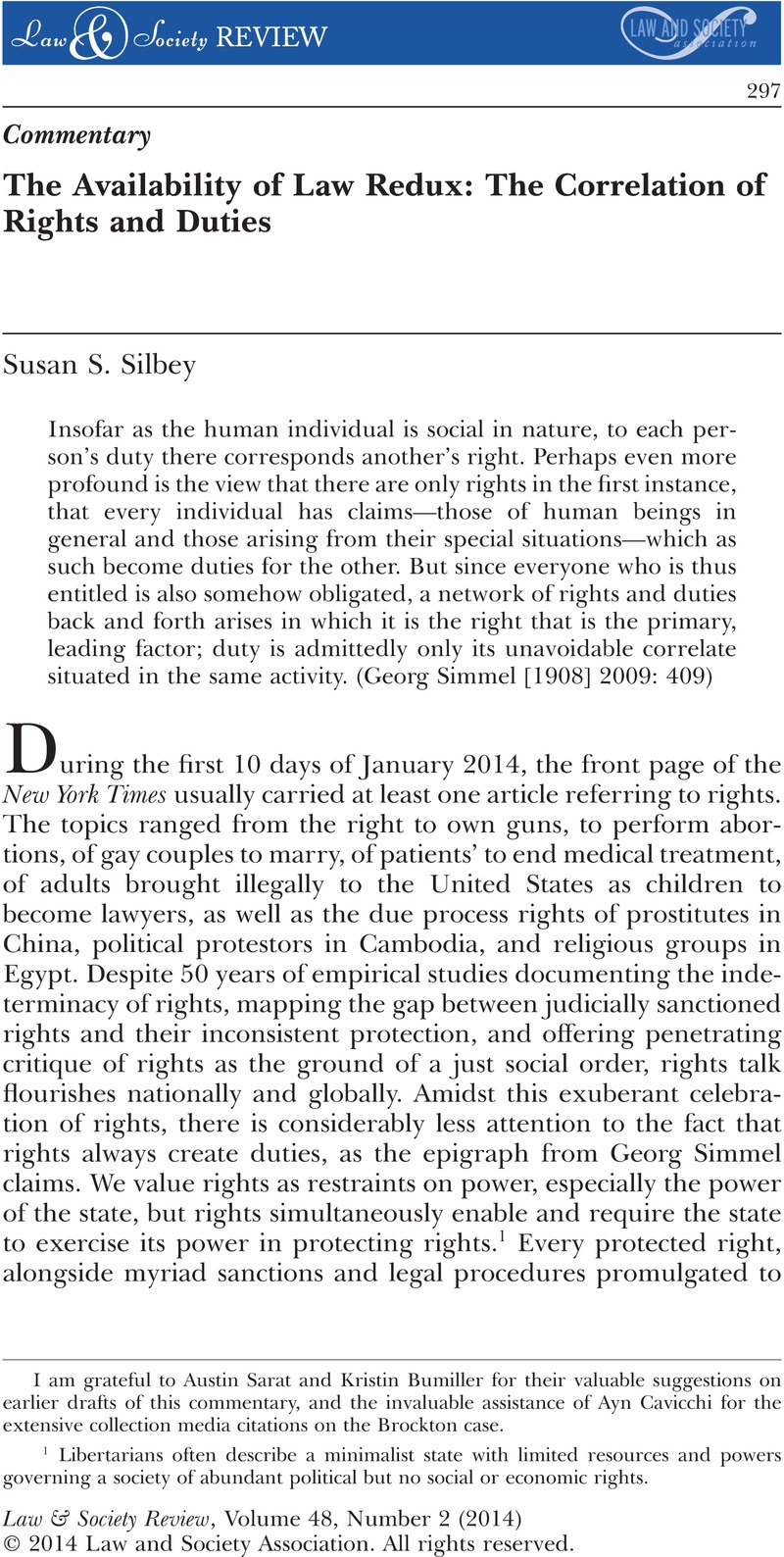No CrossRef data available.
Published online by Cambridge University Press: 01 January 2024

I am grateful to Austin Sarat and Kristin Bumiller for their valuable suggestions on earlier drafts of this commentary, and the invaluable assistance of Ayn Cavicchi for the extensive collection media citations on the Brockton case.